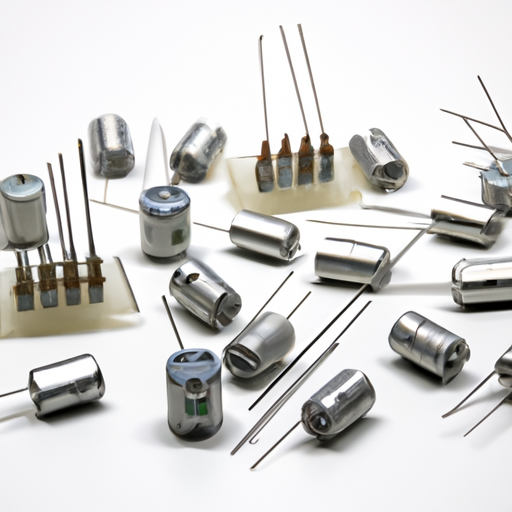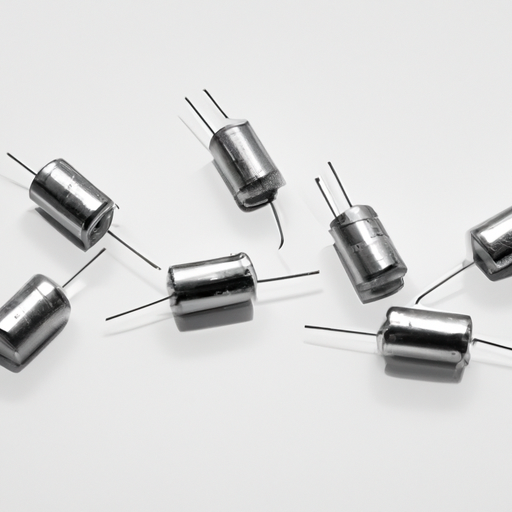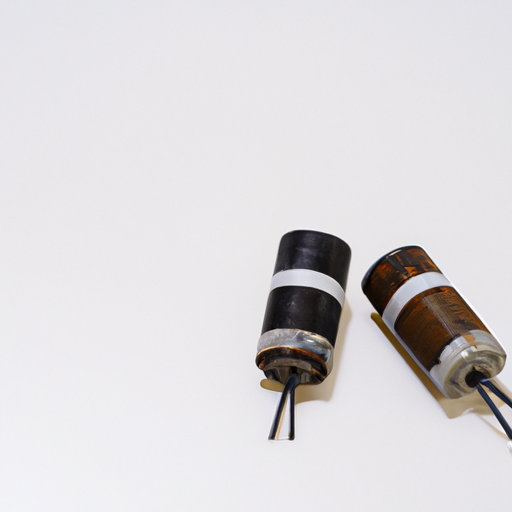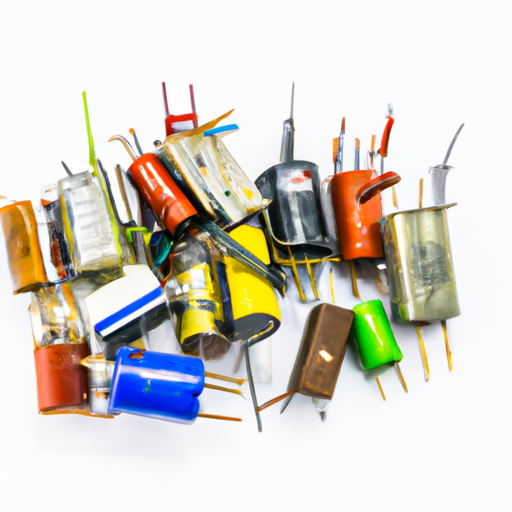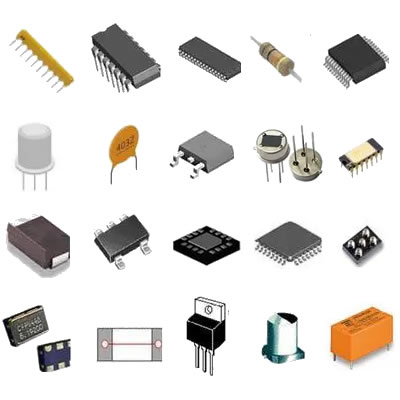Mainstream AC capacitor product series parameters
Mainstream AC Capacitor Product Series Parameters
I. Introduction
A. Definition of AC Capacitors
AC capacitors, or alternating current capacitors, are electrical components that store energy in an electric field. They are designed to operate in AC circuits, where the voltage and current periodically reverse direction. Unlike DC capacitors, which are used in direct current applications, AC capacitors are specifically engineered to handle the unique challenges posed by alternating current, such as voltage fluctuations and reactive power.
B. Importance of AC Capacitors in Electrical Systems
AC capacitors play a crucial role in various electrical systems. They are essential for power factor correction, energy storage, filtering, and signal coupling. By improving the efficiency of electrical systems, AC capacitors help reduce energy losses, enhance performance, and prolong the lifespan of electrical equipment. Their ability to stabilize voltage and current makes them indispensable in both industrial and consumer applications.
C. Overview of the Document's Purpose
This document aims to provide a comprehensive overview of mainstream AC capacitor product series parameters. It will explore the different types of AC capacitors, their key parameters, applications, selection criteria, and emerging trends in technology. By understanding these aspects, engineers and designers can make informed decisions when selecting AC capacitors for their specific applications.
II. Types of AC Capacitors
A. Film Capacitors
1. Characteristics
Film capacitors are made from thin plastic films as the dielectric material. They are known for their stability, low self-inductance, and excellent frequency characteristics. Film capacitors typically have a high voltage rating and low equivalent series resistance (ESR), making them suitable for high-frequency applications.
2. Applications
Film capacitors are widely used in power electronics, audio equipment, and motor run applications. They are also employed in power factor correction and filtering circuits due to their reliability and performance.
B. Ceramic Capacitors
1. Characteristics
Ceramic capacitors use ceramic materials as the dielectric. They are compact, cost-effective, and exhibit high capacitance values in small packages. However, they can have a non-linear capacitance change with voltage, which may affect performance in certain applications.
2. Applications
Ceramic capacitors are commonly used in decoupling and bypass applications, as well as in RF circuits and timing applications. Their small size and affordability make them a popular choice in consumer electronics.
C. Electrolytic Capacitors
1. Characteristics
Electrolytic capacitors are polarized capacitors that use an electrolyte as one of the plates. They offer high capacitance values in a relatively small size but have a limited voltage rating and a higher ESR compared to other types.
2. Applications
These capacitors are often used in power supply circuits, audio equipment, and energy storage applications. Their ability to handle large capacitance values makes them ideal for smoothing out voltage fluctuations.
D. Tantalum Capacitors
1. Characteristics
Tantalum capacitors are also polarized and use tantalum metal as the anode. They are known for their high capacitance-to-volume ratio, stability, and reliability. However, they can be more expensive than other types of capacitors.
2. Applications
Tantalum capacitors are commonly used in applications requiring high reliability, such as military and aerospace electronics, as well as in portable devices and power management circuits.
III. Key Parameters of AC Capacitors
A. Capacitance Value
1. Definition and Measurement Units
Capacitance is the ability of a capacitor to store electrical energy, measured in farads (F). In practical applications, capacitance values are often expressed in microfarads (µF) or picofarads (pF).
2. Importance in Circuit Design
The capacitance value is critical in determining how a capacitor will perform in a circuit. It affects the timing, filtering, and energy storage capabilities of the circuit, making it essential to select the appropriate capacitance for specific applications.
B. Voltage Rating
1. Definition and Measurement Units
The voltage rating indicates the maximum voltage a capacitor can withstand without breaking down, typically measured in volts (V). Exceeding this rating can lead to capacitor failure and potential damage to the circuit.
2. Impact on Performance and Safety
Choosing a capacitor with an appropriate voltage rating is vital for ensuring safe and reliable operation. A capacitor operating near or above its voltage rating may experience reduced performance and a significantly shortened lifespan.
C. Tolerance
1. Definition and Measurement Units
Tolerance refers to the allowable variation in capacitance value, expressed as a percentage. For example, a capacitor with a capacitance of 10 µF and a tolerance of ±10% can have a capacitance value between 9 µF and 11 µF.
2. Importance in Applications
Understanding tolerance is essential for applications requiring precise capacitance values. In critical circuits, selecting capacitors with tighter tolerances can help ensure consistent performance.
D. Temperature Coefficient
1. Definition and Measurement Units
The temperature coefficient indicates how a capacitor's capacitance changes with temperature, typically expressed in parts per million per degree Celsius (ppm/°C).
2. Effects on Performance
Capacitors with a high temperature coefficient may experience significant capacitance variation in fluctuating temperature environments, impacting circuit performance. Selecting capacitors with suitable temperature coefficients is crucial for applications exposed to temperature extremes.
E. Equivalent Series Resistance (ESR)
1. Definition and Measurement Units
ESR is the internal resistance of a capacitor that affects its performance in AC applications. It is measured in ohms (Ω) and can impact the efficiency and heat generation of the capacitor.
2. Importance in AC Applications
Low ESR is desirable in AC applications, as it minimizes energy losses and heat generation. High ESR can lead to reduced efficiency and potential failure in high-frequency circuits.
F. Lifetime and Reliability
1. Factors Affecting Lifespan
The lifespan of an AC capacitor can be influenced by factors such as temperature, voltage stress, and operating conditions. Capacitors operating at higher temperatures or voltages may experience accelerated aging.
2. Importance in Long-Term Applications
Selecting capacitors with a proven track record of reliability is essential for long-term applications. Understanding the expected lifespan and reliability ratings can help engineers choose the right components for their designs.
IV. Applications of AC Capacitors
A. Power Factor Correction
AC capacitors are widely used in power factor correction systems to improve the efficiency of electrical systems. By reducing reactive power, they help lower energy costs and improve the overall performance of power distribution systems.
B. Motor Start and Run Capacitors
In electric motors, AC capacitors are used to provide the necessary starting torque and to improve efficiency during operation. They help stabilize voltage and current, ensuring smooth motor performance.
C. Signal Coupling and Decoupling
AC capacitors are essential in signal coupling and decoupling applications, where they help filter out unwanted noise and stabilize signal integrity in communication systems.
D. Energy Storage in Power Electronics
In power electronics, AC capacitors are used for energy storage, enabling efficient energy transfer and conversion in applications such as inverters and converters.
E. Filtering Applications
AC capacitors are employed in filtering applications to remove unwanted frequencies from signals, ensuring clean and stable output in audio and communication systems.
V. Selection Criteria for AC Capacitors
A. Application Requirements
When selecting AC capacitors, it is essential to consider the specific requirements of the application, including capacitance value, voltage rating, and tolerance.
B. Environmental Considerations
Environmental factors such as temperature, humidity, and exposure to chemicals can impact capacitor performance. Selecting capacitors rated for the specific environmental conditions is crucial for reliability.
C. Cost vs. Performance Trade-offs
Engineers must balance cost and performance when selecting capacitors. While high-performance capacitors may offer better reliability and efficiency, they can also be more expensive.
D. Manufacturer Reputation and Standards
Choosing capacitors from reputable manufacturers that adhere to industry standards can help ensure quality and reliability. Reviewing manufacturer specifications and certifications is essential for making informed decisions.
VI. Trends in AC Capacitor Technology
A. Advancements in Materials
Recent advancements in materials have led to the development of capacitors with improved performance characteristics, such as higher capacitance values and lower ESR.
B. Miniaturization and Compact Designs
The trend toward miniaturization has resulted in smaller, more compact capacitor designs, making them suitable for modern electronic devices with limited space.
C. Smart Capacitors and IoT Integration
The integration of smart technology into capacitors allows for real-time monitoring and control, enhancing performance and reliability in various applications.
D. Sustainability and Eco-Friendly Options
As environmental concerns grow, manufacturers are increasingly focusing on developing eco-friendly capacitor options, utilizing sustainable materials and production processes.
VII. Conclusion
A. Recap of Key Points
AC capacitors are vital components in electrical systems, offering various types and parameters that cater to specific applications. Understanding their characteristics, key parameters, and selection criteria is essential for engineers and designers.
B. Importance of Understanding AC Capacitor Parameters
A thorough understanding of AC capacitor parameters enables informed decision-making, ensuring optimal performance and reliability in electrical systems.
C. Future Outlook for AC Capacitor Technology
As technology continues to evolve, AC capacitors will play an increasingly important role in enhancing the efficiency and performance of electrical systems. Ongoing advancements in materials, design, and smart technology will shape the future of AC capacitors, making them even more integral to modern electronics.
VIII. References
A. Academic Journals
- IEEE Transactions on Power Electronics
- Journal of Applied Physics
B. Industry Standards and Guidelines
- IEC 61071: Capacitors for Power Electronics
- ANSI C37.99: Guide for the Application of Capacitors
C. Manufacturer Specifications and Datasheets
- Manufacturer datasheets from leading capacitor manufacturers
- Technical documentation from industry leaders in capacitor technology
---
This blog post provides a detailed overview of mainstream AC capacitor product series parameters, covering essential aspects from types and key parameters to applications and selection criteria. Understanding these elements is crucial for anyone involved in electrical engineering and design.


